In an era defined by rapid urbanization and a constant connection to the digital world, our innate human need for a connection with nature has never been stronger. This deep-seated craving is driving a revolution in architecture and interior design, leading to the rise of Biophilic Design: Nature-Centric Spaces. Biophilic design is more than just adding a few plants to a room; it’s a profound philosophy that integrates natural elements into the built environment to improve the health, happiness, and well-being of its inhabitants. This article will provide a comprehensive look into the core principles of biophilic design, exploring the scientific evidence that supports its benefits, and delving into the practical applications for homes, offices, and public spaces. We’ll examine the strategic imperatives for architects and designers, and the new challenges and opportunities that are defining the future of human-centered, nature-inspired architecture.
The Foundational Principles of Biophilic Design

The concept of biophilia, a term popularized by biologist E.O. Wilson, describes our innate, biological connection to nature. Biophilic design leverages this connection through a set of core principles that guide the integration of nature into the built environment. These principles are not about mimicking nature, but about creating an authentic, restorative, and multi-sensory experience.
A. Direct Connection to Nature: This principle involves the direct, physical presence of nature in a space. It’s the most straightforward and powerful way to create a biophilic environment.
- Natural Light: Maximizing natural light is a cornerstone of biophilic design. It regulates our circadian rhythm, boosts our mood, and can improve productivity. Architects prioritize large windows, skylights, and open floor plans to flood spaces with daylight.
- Plants and Greenery: The presence of plants and living walls is a classic and highly effective element. They not only improve air quality but also create a sense of life and vitality. A space with plants feels more calming and less sterile.
- Water Features: The sight and sound of water are deeply soothing. Indoor fountains, water walls, and even aquariums can introduce this element, creating a calming ambiance and a visual focal point.
B. Indirect Connection to Nature: This principle involves the use of natural forms, colors, and materials to evoke a sense of nature in a space. It’s about bringing the essence of nature indoors, even when a direct connection isn’t possible.
- Natural Materials and Textures: Using materials like wood, stone, bamboo, and cork adds an organic, tactile quality to a space. These materials have a timeless aesthetic and a unique texture that connects us to the natural world.
- Biomorphic Forms and Patterns: This involves using shapes and patterns that are inspired by nature, such as curves, spirals, and fractal geometry. Think of furniture with soft, rounded edges or a wallpaper with a pattern that mimics the vein of a leaf. These forms feel more organic and less rigid than a traditional, geometric design.
- Natural Colors: A biophilic color palette is drawn directly from nature. It includes earthy tones, deep greens, and calming blues. These colors have been shown to have a positive impact on our psychological well-being.
C. The Human-Nature Relationship: This principle is about the emotional and psychological connection to nature. It involves creating a space that feels comfortable, safe, and nurturing, similar to how we feel in a natural environment.
- Prospect and Refuge: This is a key psychological concept in biophilic design. Prospect is the feeling of having a clear, unimpeded view of a space, while refuge is the feeling of being in a safe, sheltered place. A biophilic space often has a combination of both, such as a cozy reading nook with a clear view of a window.
- Mystery and Risk: This principle involves creating a sense of mystery and intrigue, similar to how we feel when exploring a forest or a natural landscape. It can be achieved through a winding pathway, a hidden courtyard, or an obscured view that invites a person to explore.
The Scientific Case for Biophilic Design
The benefits of biophilic design are not just anecdotal; they are backed by a growing body of scientific evidence. Research from fields such as environmental psychology and neuroscience has consistently shown that a connection to nature can have a profound impact on our physical and mental health.
A. Psychological Benefits: Biophilic design has been shown to reduce stress, improve mood, and enhance cognitive function.
- Stress Reduction: Studies have shown that exposure to nature, even in the form of a view of greenery from a window, can significantly reduce a person’s heart rate, blood pressure, and cortisol levels (the stress hormone).
- Cognitive Function: A biophilic environment has been shown to improve a person’s focus, attention, and memory. For example, a study found that students in a classroom with natural light and a view of nature performed better on tests.
- Mental Health: A connection to nature has been linked to a reduction in symptoms of anxiety and depression. It can create a sense of calm and well-being, which is a critical part of a person’s mental health.
B. Physiological Benefits: Biophilic design also offers a number of physiological benefits.
- Improved Air Quality: Plants and living walls can improve indoor air quality by filtering out pollutants and toxins.
- Faster Recovery Times: A famous study by researcher Roger Ulrich found that hospital patients with a view of a natural landscape had shorter hospital stays, took less pain medication, and had a more positive outlook than patients with a view of a brick wall.
- Physical Activity: A biophilic design can also encourage physical activity. The presence of walking paths, green spaces, and a connection to the outdoors can encourage a person to be more active.
C. Economic Benefits: The benefits of biophilic design are not just for a person’s health; they are also for a business’s bottom line.
- Increased Productivity: A biophilic office has been shown to increase employee productivity and creativity. Employees in these environments are more focused, more engaged, and more likely to be innovative.
- Reduced Absenteeism: The health benefits of biophilic design, such as a reduction in stress and a faster recovery time, can lead to a reduction in employee absenteeism.
- Higher Property Values: Biophilic buildings are often seen as more desirable and more valuable. A building that has a green roof, a living wall, or a connection to a natural landscape can command a higher price and attract a new generation of tenants.
Practical Applications of Biophilic Design
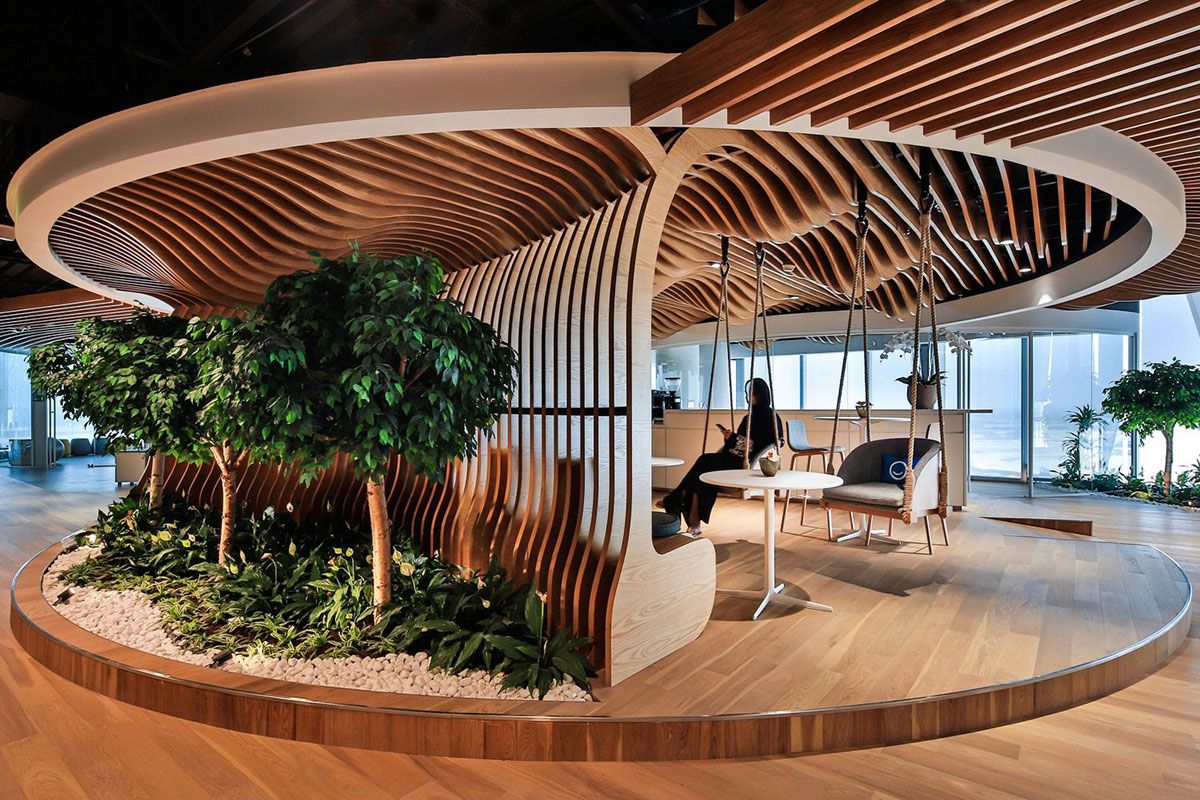
The principles of biophilic design can be applied to any space, from a small home office to a massive corporate headquarters. The key is to be intentional and to choose the right elements for the right space.
A. Biophilic Homes: A Sanctuary for the Soul: A biophilic home is a sanctuary from the chaos of the outside world.
- Natural Light and Views: Maximize natural light with large windows, and if you can, create a view of a natural landscape, such as a garden or a park.
- Plants and Greenery: Use plants to create a sense of life and vitality. A living wall can be a stunning focal point, or a few well-placed plants can create a sense of calm and well-being.
- Natural Materials: Use natural materials like wood, stone, and linen for furniture, flooring, and decorative accents. These materials add a tactile quality and a sense of organic beauty.
B. Biophilic Offices: The New Workplace Standard: A biophilic office is no longer a luxury; it’s a new standard for a workplace that wants to attract and retain top talent.
- Green Walls and Courtyards: Green walls and indoor courtyards can be used to create a sense of nature in a high-rise office building.
- Natural Light and Airflow: Prioritize natural light and natural airflow. A well-ventilated office is a more comfortable and productive one.
- Biomorphic Forms: Use biomorphic forms and patterns for furniture and design accents. Furniture with soft, rounded edges and a carpet with a pattern that mimics a natural landscape can create a more organic and less sterile feel.
C. Biophilic Public Spaces: A Connection to the Community: Public spaces, such as libraries, schools, and hospitals, can also benefit from biophilic design.
- Hospitals: A hospital with a view of a garden or a natural landscape can have a profound impact on a patient’s recovery time.
- Schools: A school with natural light, a view of nature, and a connection to the outdoors can improve a student’s performance and their mental health.
- Libraries: A library with a green roof, a living wall, or a connection to a natural landscape can create a sense of calm and well-being for its patrons.
The Future of Biophilic Design
The field of biophilic design is not a static concept. It is a dynamic and evolving frontier that is being shaped by new technologies and a new understanding of our relationship with nature.
A. The Technology and Biophilia Dilemma: The future of biophilic design will be defined by its relationship with technology.
- Smart Biophilia: New technologies, such as smart lighting systems that can mimic natural light cycles and sensors that can monitor a plant’s health, are being used to create a more intelligent and responsive biophilic environment.
- Virtual Nature: The rise of virtual and augmented reality is also creating new opportunities for biophilic design. A person can, for example, use a virtual reality headset to experience a virtual forest, which can have a similar effect on their mental health as a real one.
B. The Sustainable and Ethical Imperatives: The future of biophilic design is inextricably linked to sustainability and ethics.
- Sustainable Materials: The use of natural materials is a core part of biophilic design, but a designer must also ensure that these materials are sourced ethically and sustainably.
- Biophilic Architecture: The principles of biophilic design are being integrated into a new era of architecture that is more sustainable, more energy-efficient, and more aligned with the natural world.
C. The Role of the Public: The public has a powerful role to play in shaping the future of biophilic design.
- Consumer Demand: As consumers become more aware of the benefits of biophilic design, they will demand that their homes, offices, and public spaces be more nature-centric.
- Advocacy: Citizens can advocate for new laws and regulations that require new buildings to be more biophilic and to have a greater connection to nature.
Conclusion
Biophilic Design: Nature-Centric Spaces is more than just a design trend; it’s a new social contract between humanity and nature. It is a recognition that our health, our happiness, and our well-being are inextricably linked to the natural world. The challenges are immense, from the urban sprawl of our cities to the digital noise of our technology. However, the opportunity is even greater: to use the power of design to create a world that is not just more beautiful, but also more sustainable, more resilient, and more in harmony with nature. The future of architecture and design is here, and it is a new era of nature-inspired, human-centered spaces.


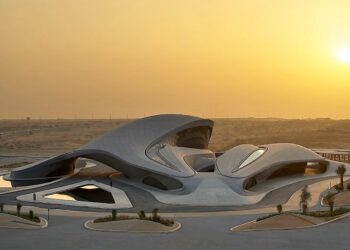
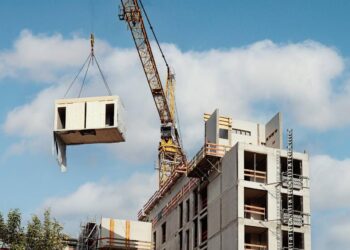
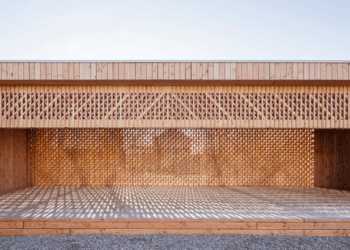
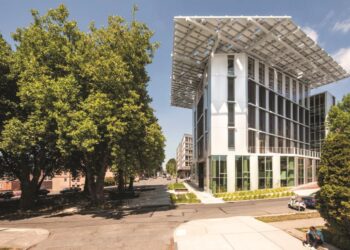



Discussion about this post